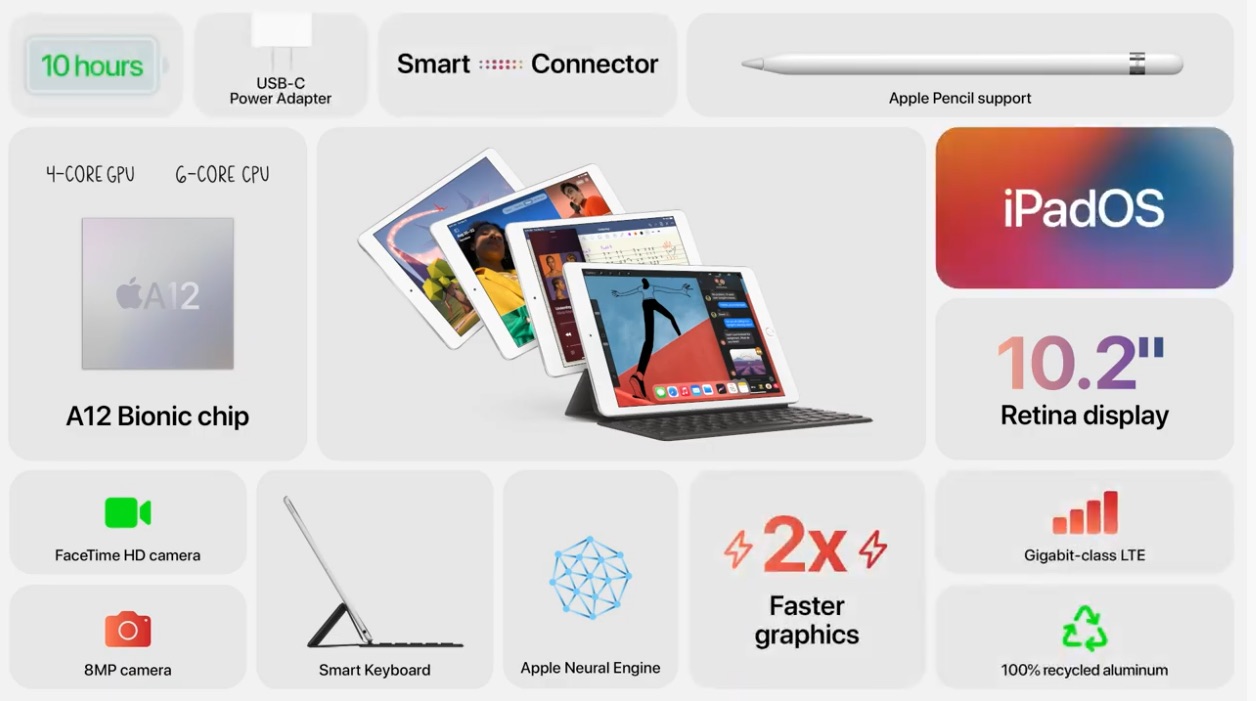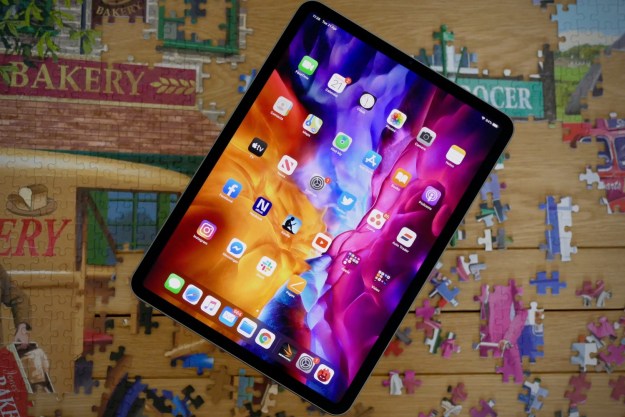Apple announced the new highly-anticipated iPad (8th generation) and iPad Air (4th generation) during its Time Flies event on Tuesday.
The entry-level iPad 8, or what Apple will simply call “the iPad,” features an A12 CPU and costs just $329. While the iPad Air, now in its fourth generation, features a much more powerful A14 chip and starts at $599. Both will be available starting next month.
The eighth generation of the iPad comes with a 10.2-inch retina display, a FaceTime HD camera, an 8-megapixel rear camera, Apple Pencil support, and can run for up to 10 hours of consistent use on a single charge (and much more over the course of days of casual use). It also has an A12 Bionic chip with Neural Engine, which means a major performance boost.

Apple also introduced a new iPad Air, which really gets people excited because it’s a considerable upgrade over the base iPad. The iPad Air has an edge-to-edge, 10.9-inch Liquid Retina display, a next-generation Touch ID sensor on the side of the tablet, advanced cameras, Wi-Fi 6, and an LTE chipset that’s 60% faster. It comes with an Apple Pencil that attaches to the side magnetically for storage and charging.

The new chipset in the iPad Air is an A14 Bionic processor that Apple says “challenges the laws of physics.” The A14 Bionic is a 5nm chip with a six-core CPU and 11.8 billion transistors. With this new processor, the new iPad Air will have a 40% increase in CPU performance compared to the previous iPad Air, and a 30% increase in graphics performance. The A14 chip also includes machine-learning accelerators for apps to use. With all of these changes, the iPad Air gets much closer to the iPad Pro line, further distancing itself from the base iPad and ultimately making it a tough decision for buyers who are considering the smaller Pro model.
Both of the iPads will have iPadOS 14, which is launching for all recent iPads tomorrow. iPadOS 14 brings new features and designs that take advantage of the unique capabilities of iPad, its large Multi-Touch display, and versatile accessories while further integrating Apple Pencil into the iPad experience for better note-taking capabilities and handwritten notes.
Editors' Recommendations
- Apple accidentally revealed a big iPad Pro display upgrade
- You may have to wait a while longer for new iPads
- This is when Apple will finally release its new 2024 iPads
- Apple may announce new iPads next month. Here’s everything we expect
- Apple’s new iPad Pro may not be as expensive as we feared




